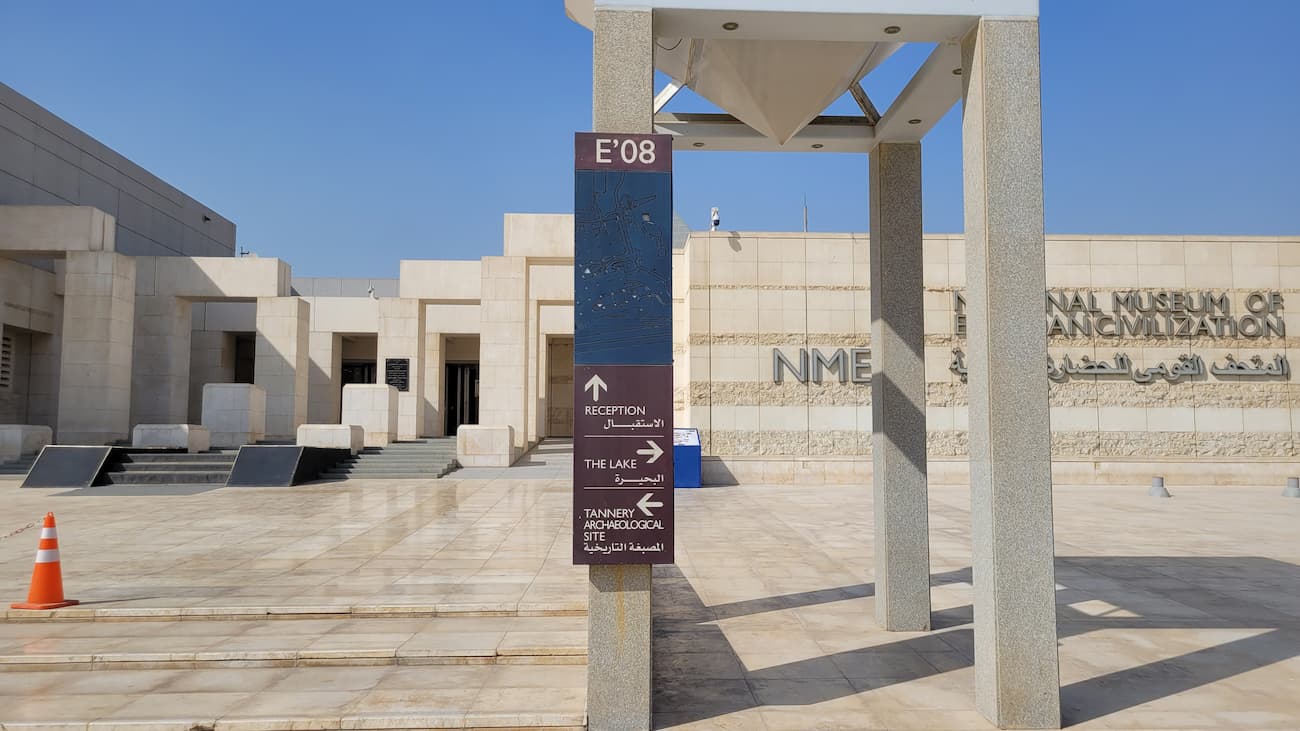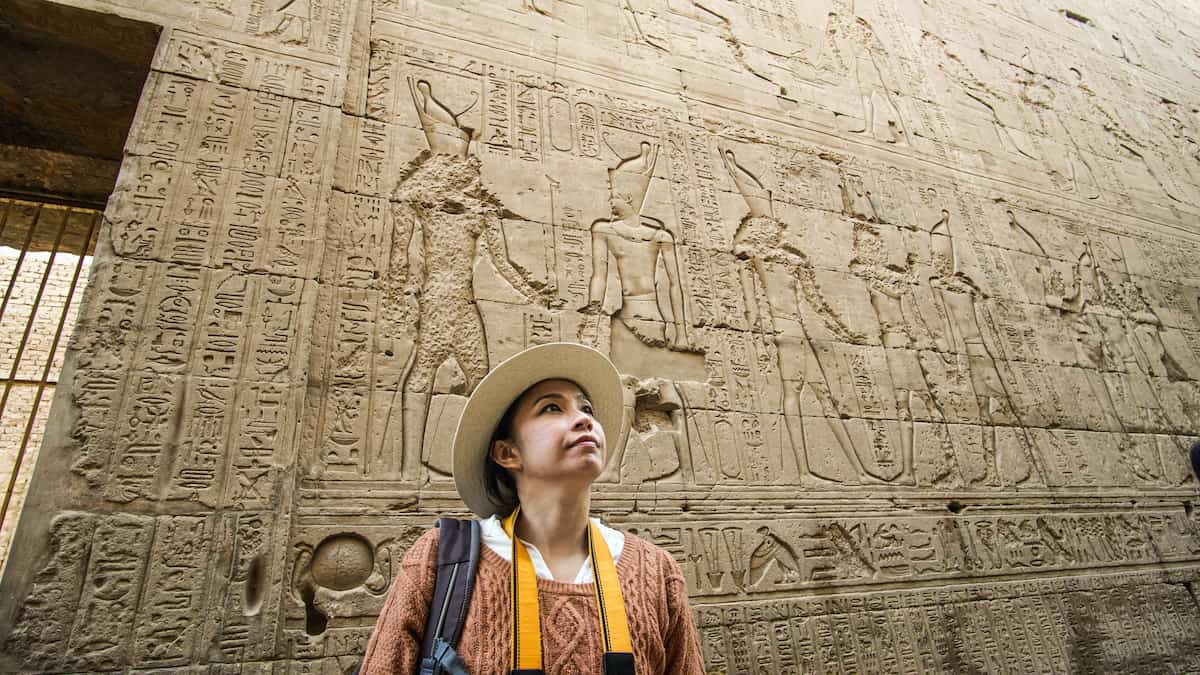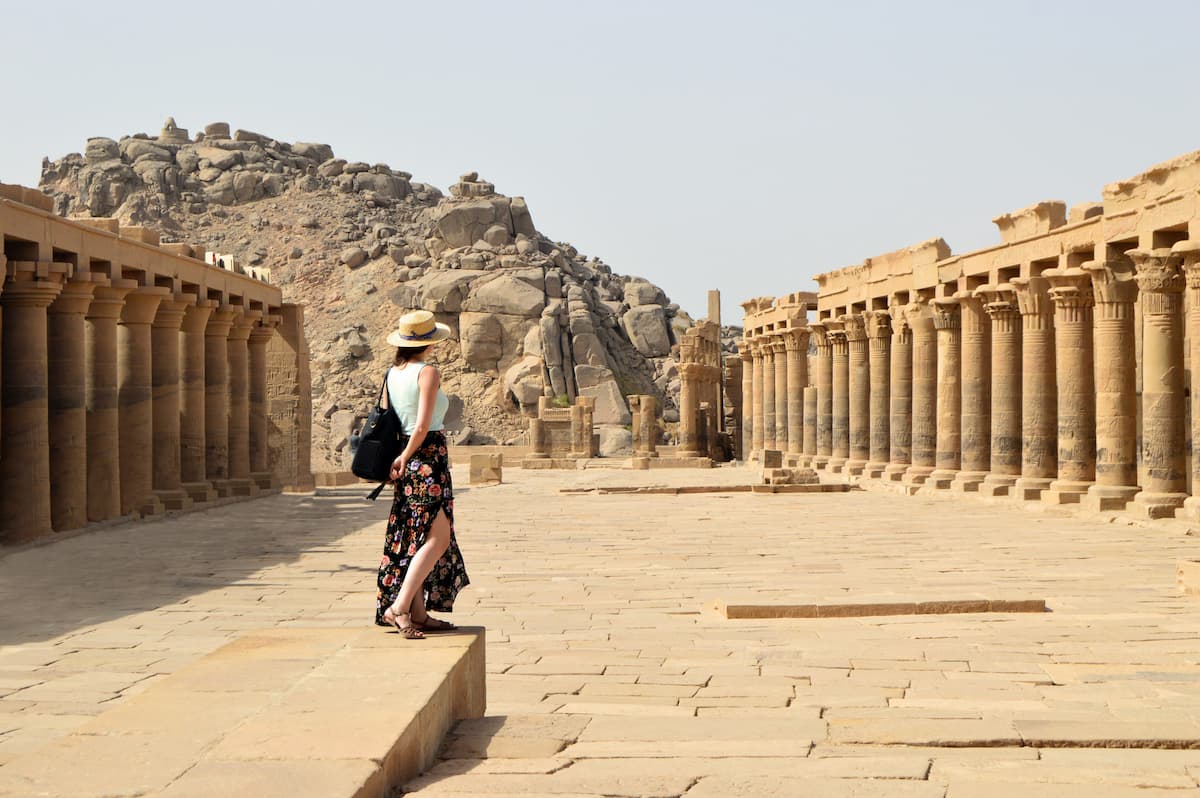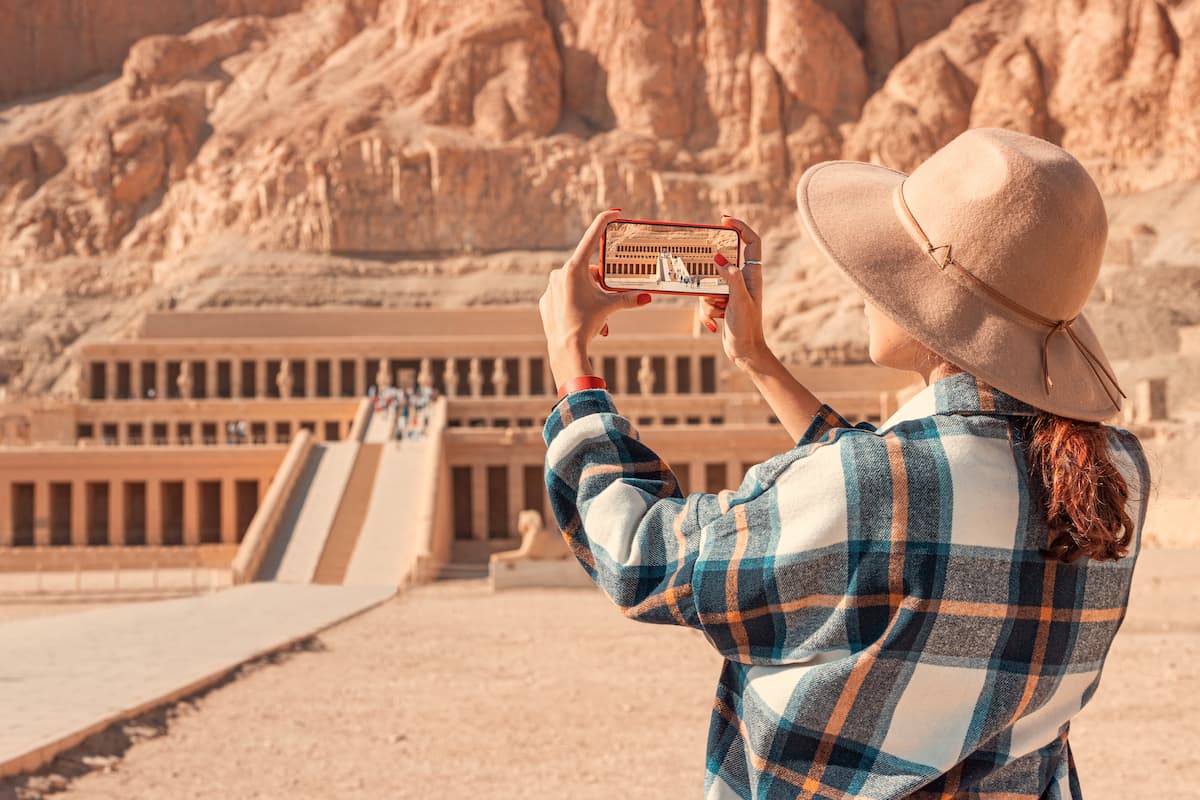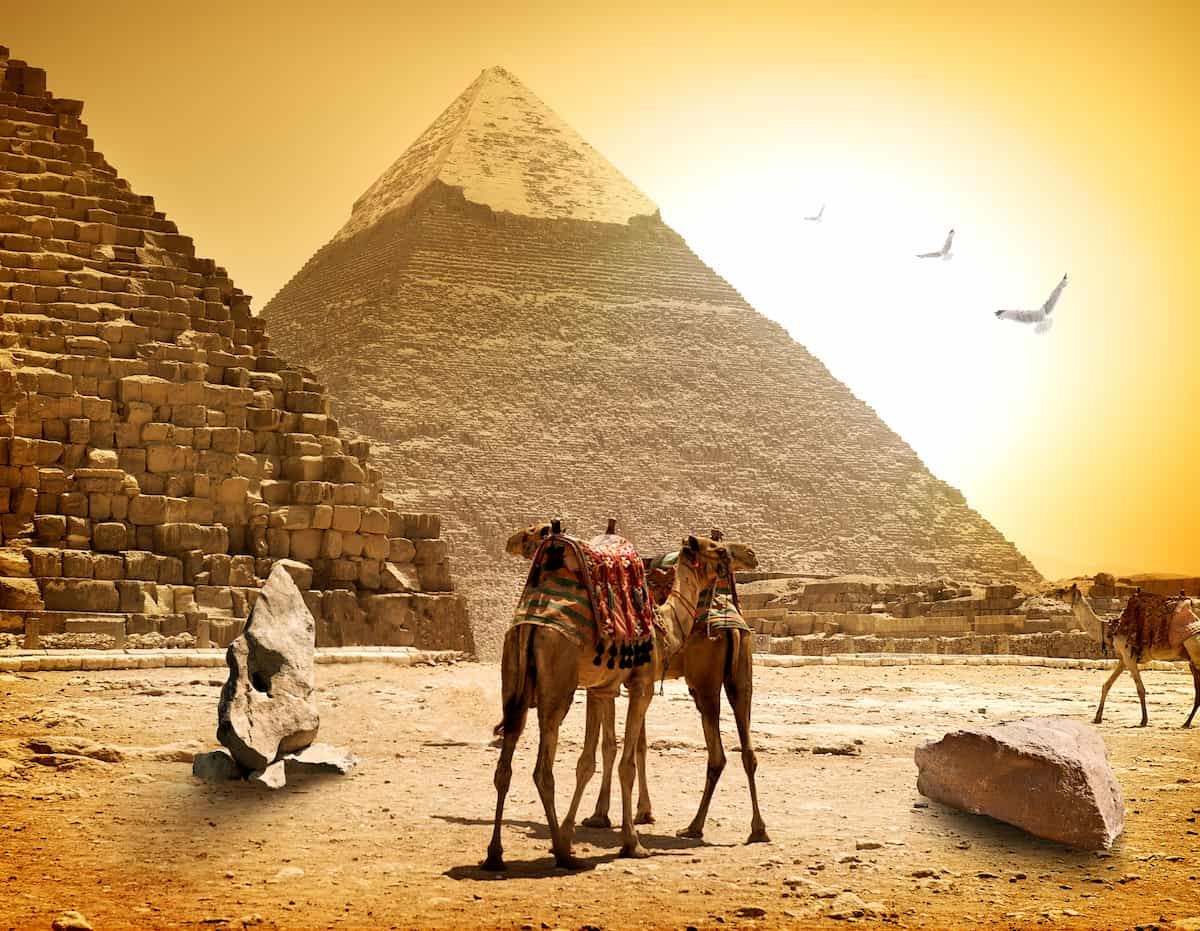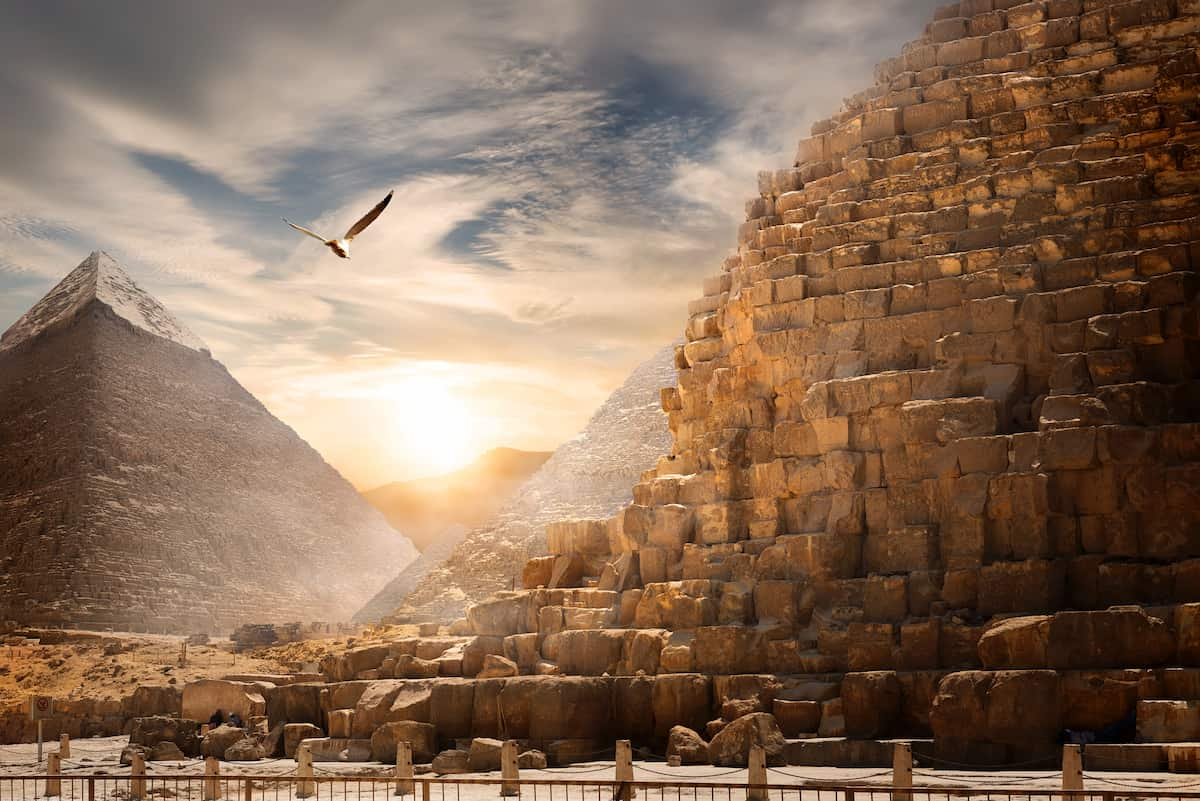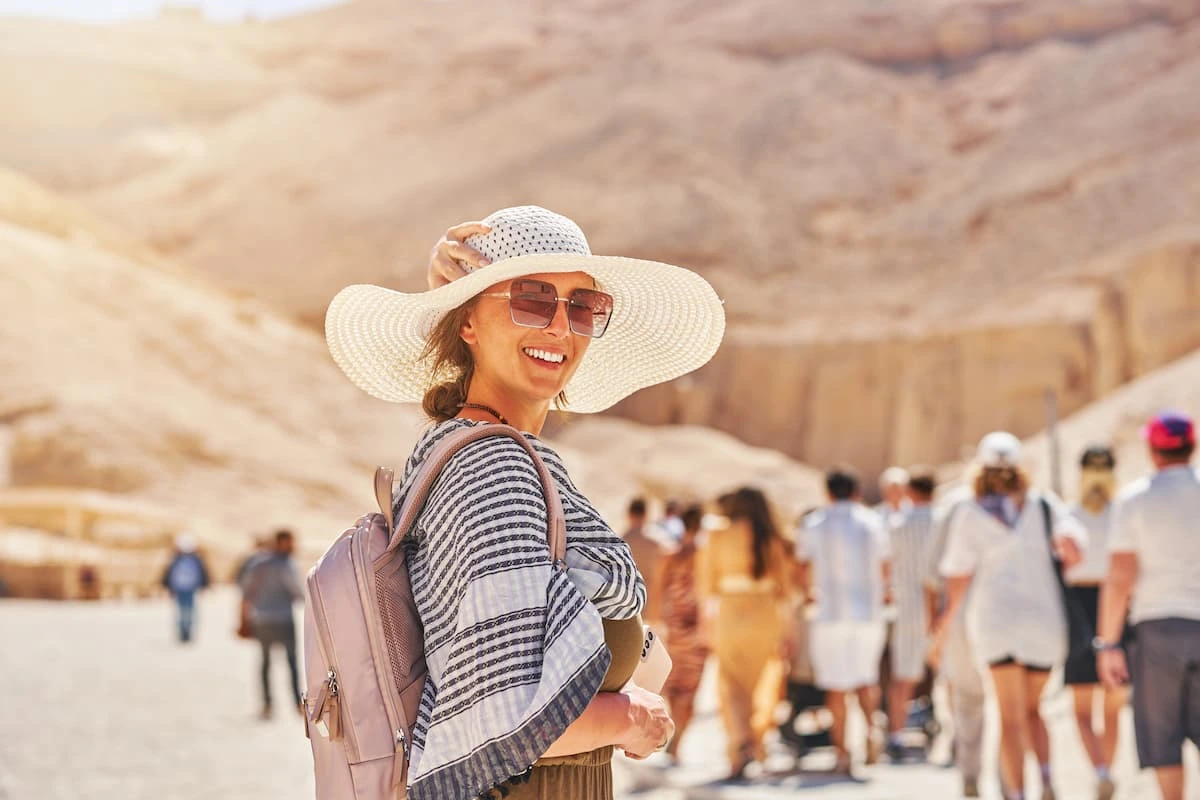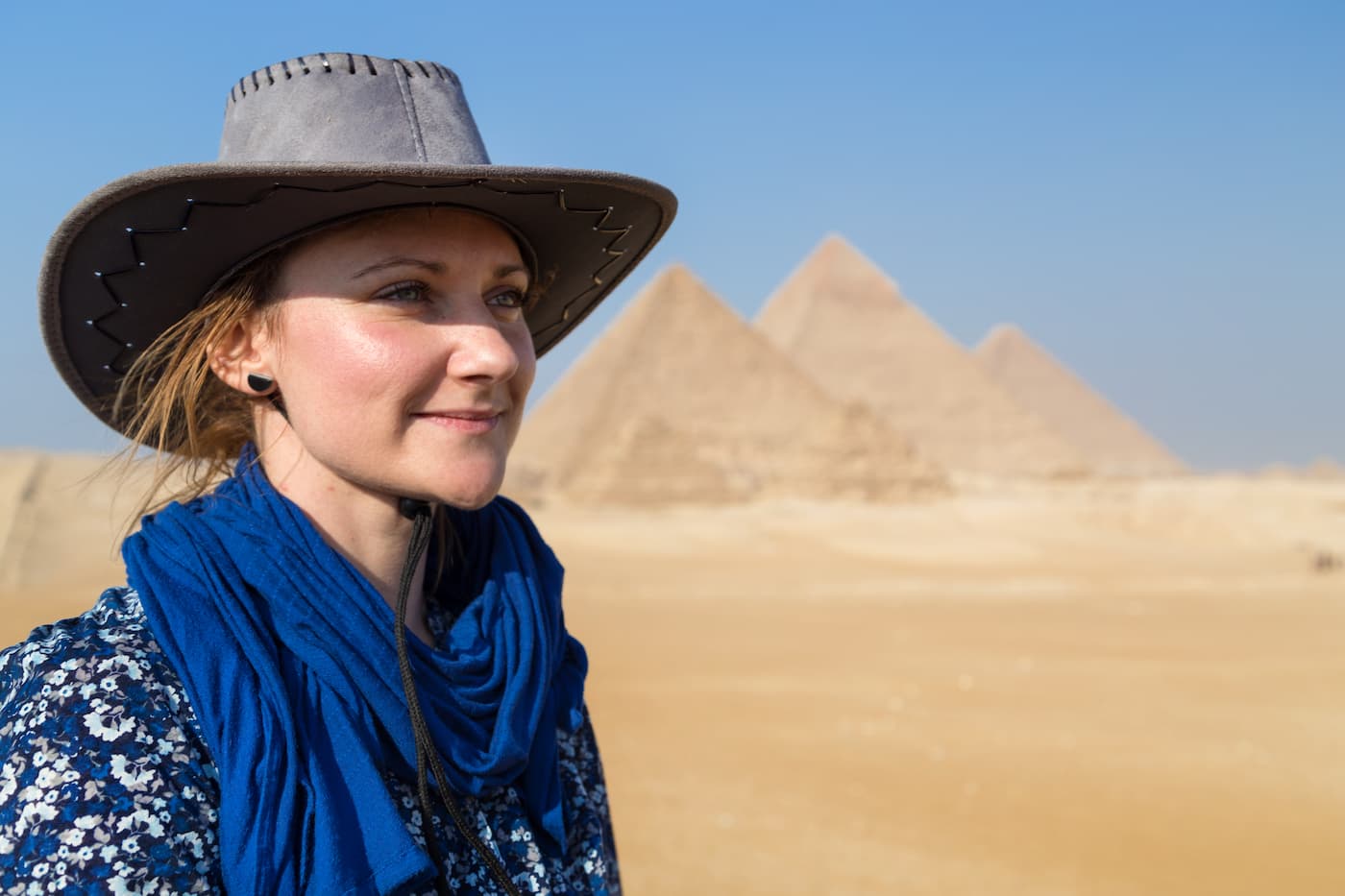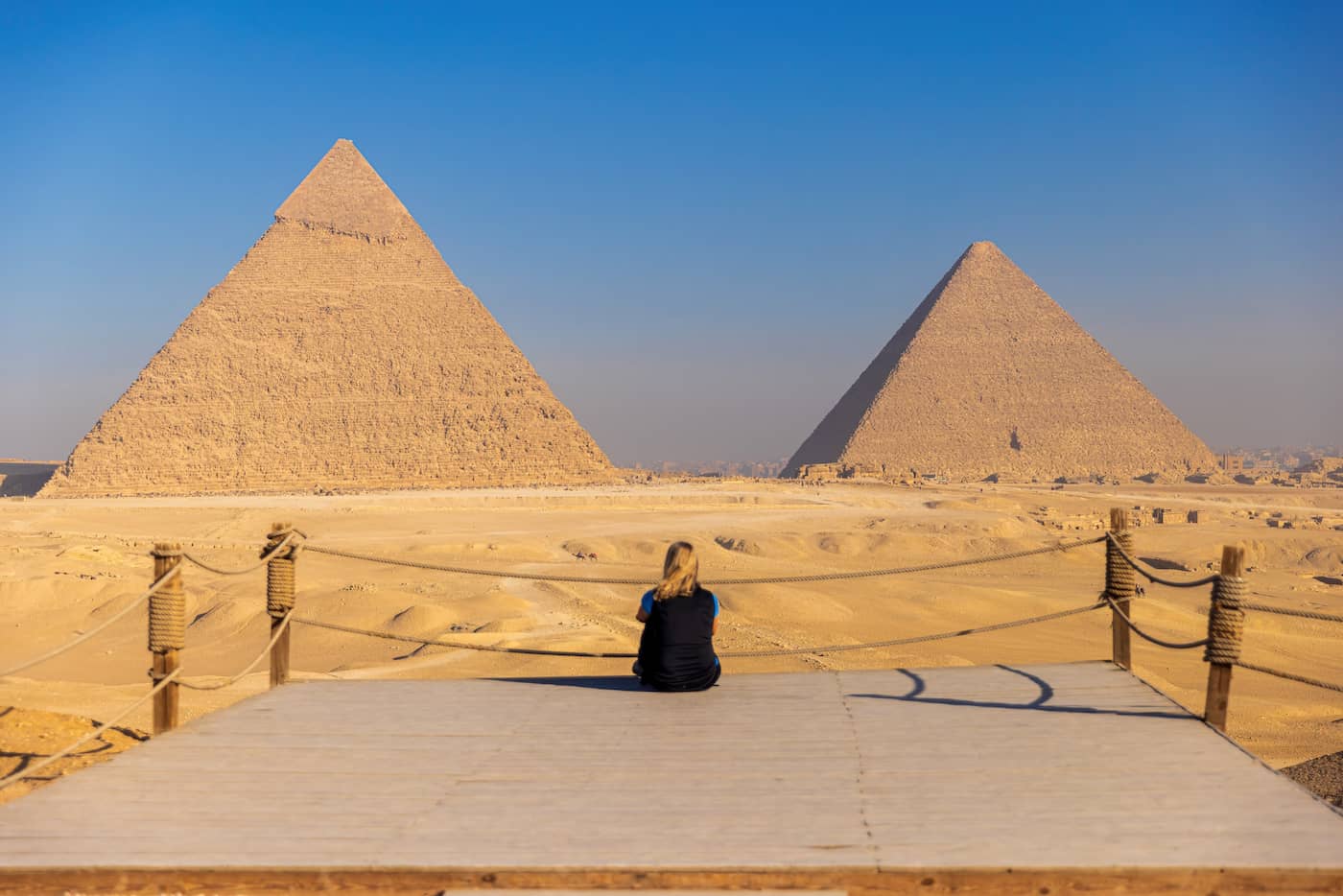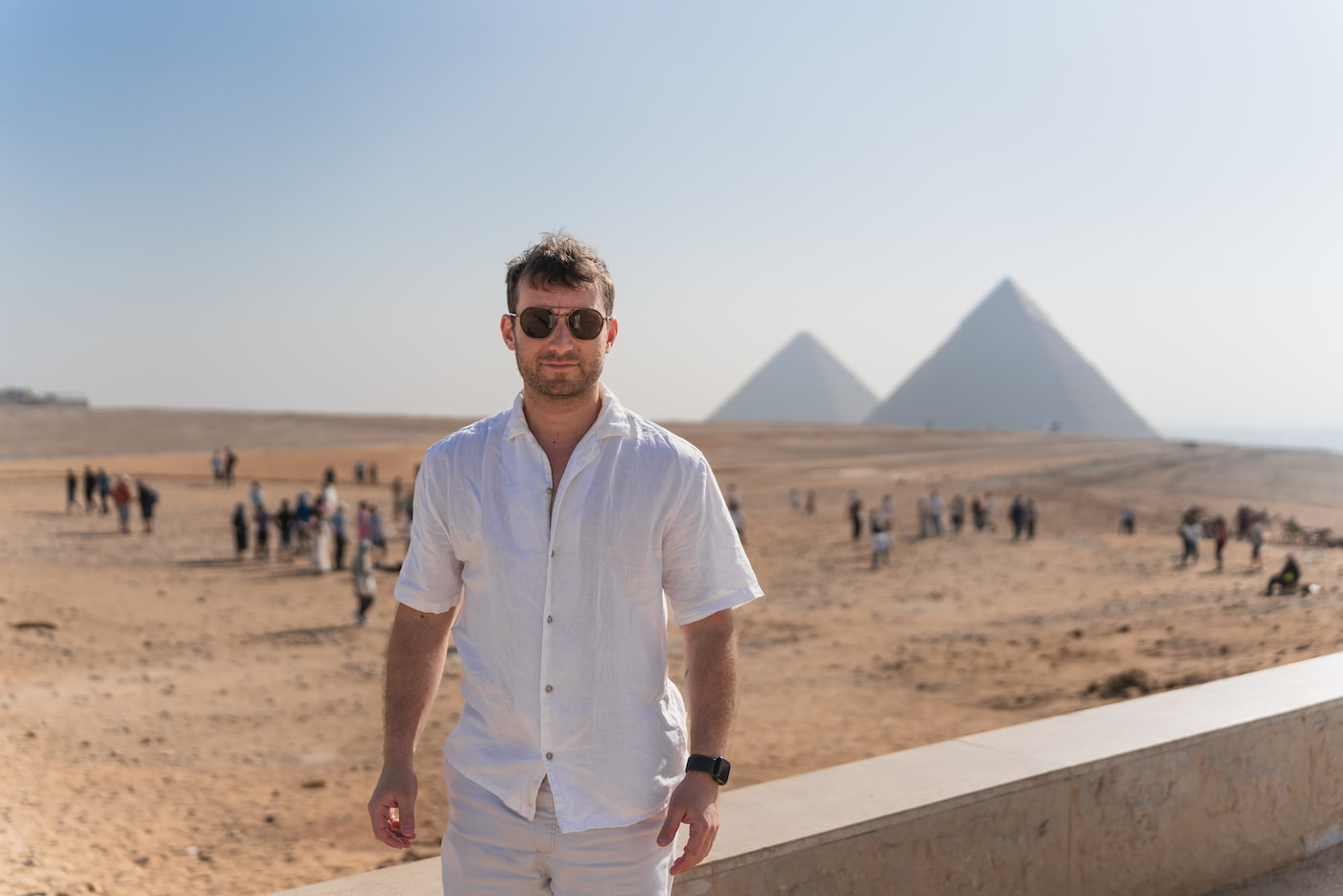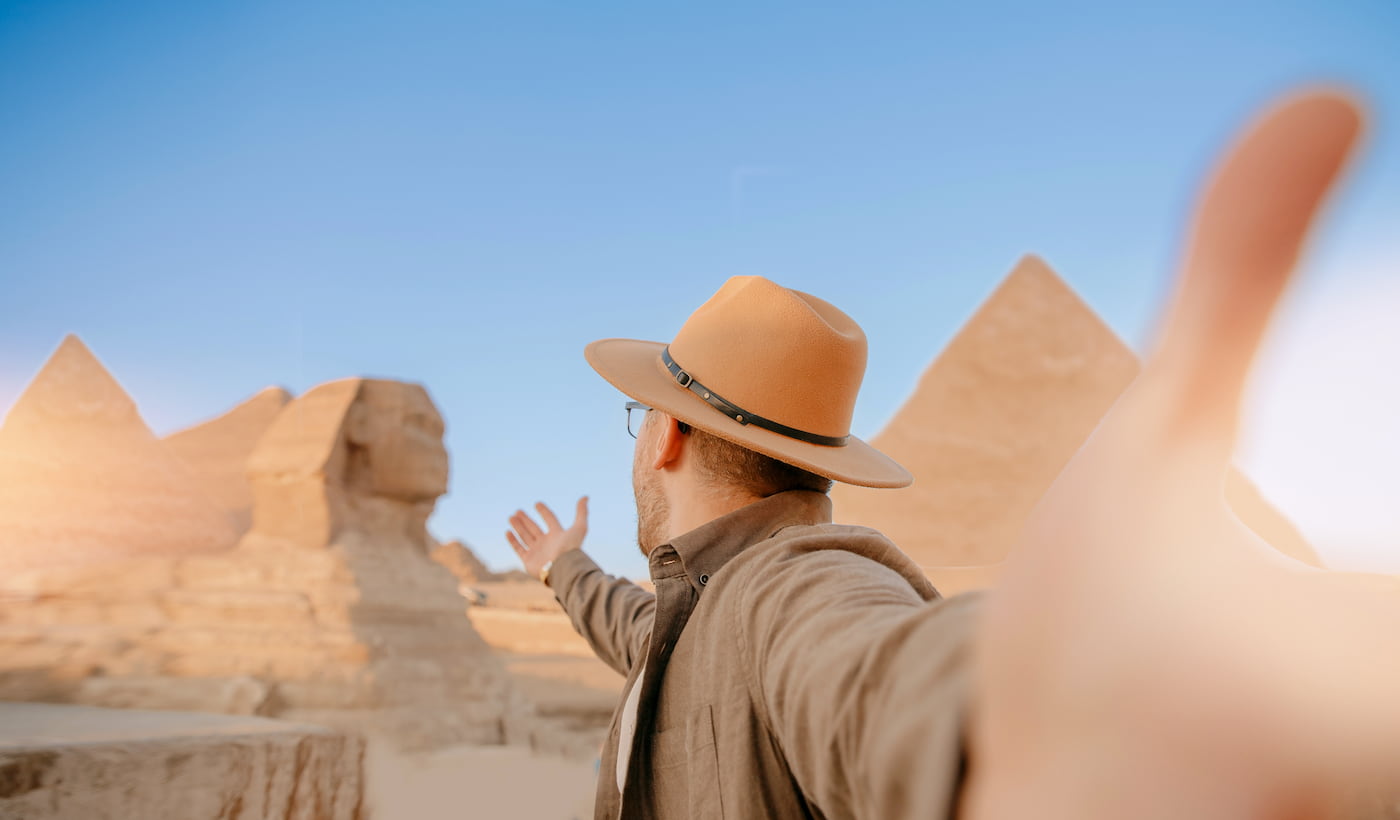The National Museum of Egyptian Civilization (NMEC): Incredible Civilization
The National Museum of Egyptian Civilization (NMEC) is a large museum in Old Cairo, which is a district of Cairo, Egypt. In general, NMEC is more than just a museum.
Egyptians partially opened the museum in 2017. Then the museum was officially inaugurated on 3 April 2021. During the opening, they moved 22 mummies, including 18 kings and four queens, from the Egyptian Museum in central Cairo, in the Pharaohs’ Golden Parade. The museum displays a collection of 50,000 artifacts, which present the Egyptian civilization from prehistoric times to the Modern era.

The National Museum of Egyptian Civilization
Museum of Civilization Collections
The permanent collection in the museum is two separate regions: one chronological and the other thematic. The chronological regions are like: Archaic, Pharaonic, Greco-Roman, Coptic, Medieval, Islamic, modern, and contemporary. The thematic regions are like Dawn of Civilization, The Nile, Writing, State and Society, Material Culture, Beliefs and Thinking, and the Gallery of Royal Mummies. UNESCO provided technical help to the museum(NMEC).
In addition, these collections were from other Egyptian museums like the Egyptian Museum, the Coptic Museum, the Museum of Islamic Art, the Manial Palace and Museum in Cairo, and the Royal Jewelry Museum in Alexandria.
The National Museum of Egyptian Civilization has an incredible collection that includes mummies and treasures from across Egyptian history. It includes 20 royal mummies and a vast collection of artifacts from Ancient Egypt through the modern day – all in a megalithic building overlooking a lake. It’s a sweeping collection that gives you a great overview of Egyptian culture through the ages.
Moreover, it’s a perfect introduction to your travels across the country. You’ll see everything from prehistoric stone tools to the golden coffins of Ancient Egypt and the glass lamps of medieval mosques. There are also 19th-century busts of Khedive Ismail, who inaugurated the Suez Canal, and sculptures by early modernist Egyptian artists.
10 Must-See Highlights at the Museum Of Civilization
So, here are the top must-see masterpieces at the National Museum of Egyptian Civilization(NMEC):
1- NMEC Main Hall

NMEC MainHall
The main Hall helps visitors obtain an integrated idea of the Egyptian civilization and its most important achievements from prehistoric times to the modern era. In addition, it presents the traditional culture that modern Egyptians have inherited. This gallery includes Nazlet Khater Skeleton, the Tent of Purification, the coffin of Sennedjem, the Nilos Statue, Minbar Aboubakr Ibn Mizhar, the Al Falaha Statue, and many other pieces.
The Main Hall has a diverse array of objects from Egypt’s history in chronological order, including some stunning Ancient Egyptian statues, jewelry, and coffins.
2- Mummies Hall
The Mummies Hall in NMEC is in the center of the museum in a circular hall that’s below ground and dimly lit to preserve the mummies. A beautiful light show plays in the hall that you can also watch from upstairs.
The Royal Mummies’ Hall displayed the mummies of the ancient monarchs of Egypt. The design aims to give the visitor the feeling of strolling down the Valley of the Kings. As most of these mummies were originally resting. The hall includes 20 royal mummies, 18 kings, and 2 queens, from the 17th to the 20th dynasties.
From these kings and queens: Seqenenre Tao, Ahmose-Nefertari, Amenhotep I, Amenhotep III, Hatshepsut, Seti II, Ramesses III, and many other kings.
3- The NMEC Egyptian Textile Hall
The Egyptian Textile Hall is large enough to be its museum. It includes a vast collection of traditional Bedouin dresses, uniforms, and displays on the linen of Ancient Egypt. The Egyptian Textile Gallery contains a collection that has approximately 600 artifacts. It’s outside of the Main Hall and located immediately to the left after you pass through the ticket gates.
4- Dye House in the NMEC
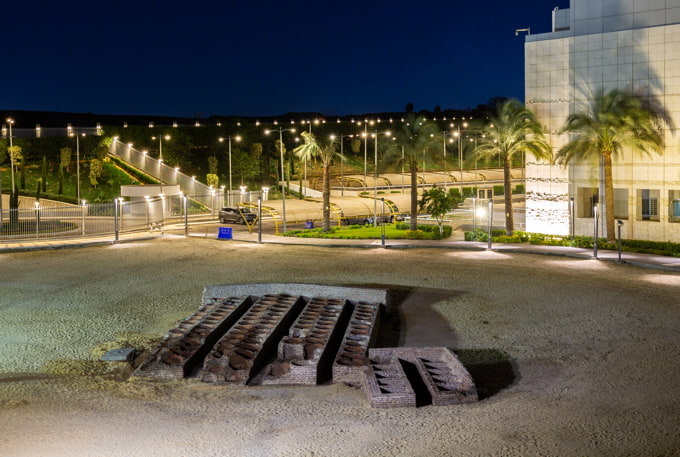
Dye House
This ancient dye house dates back to at least the first century of the Fatimid period. It is the only evidence of Cairo’s ancient dye houses. It tells the story of the Ancient Egyptians’ use of coloring agents to permanently dye fabrics. It’s outside to your left.
5- Ain el-Sera Lake

Ain el-Sera Lake
The museum exists next to the Ain el-Sera Lake, which is an area that has been developed from slums into a tourist site in 2022. It includes a restaurant area, an open-air theatre, green areas, wooden pergolas, fountains, and a purification plant of lake water.
6- Senenmut
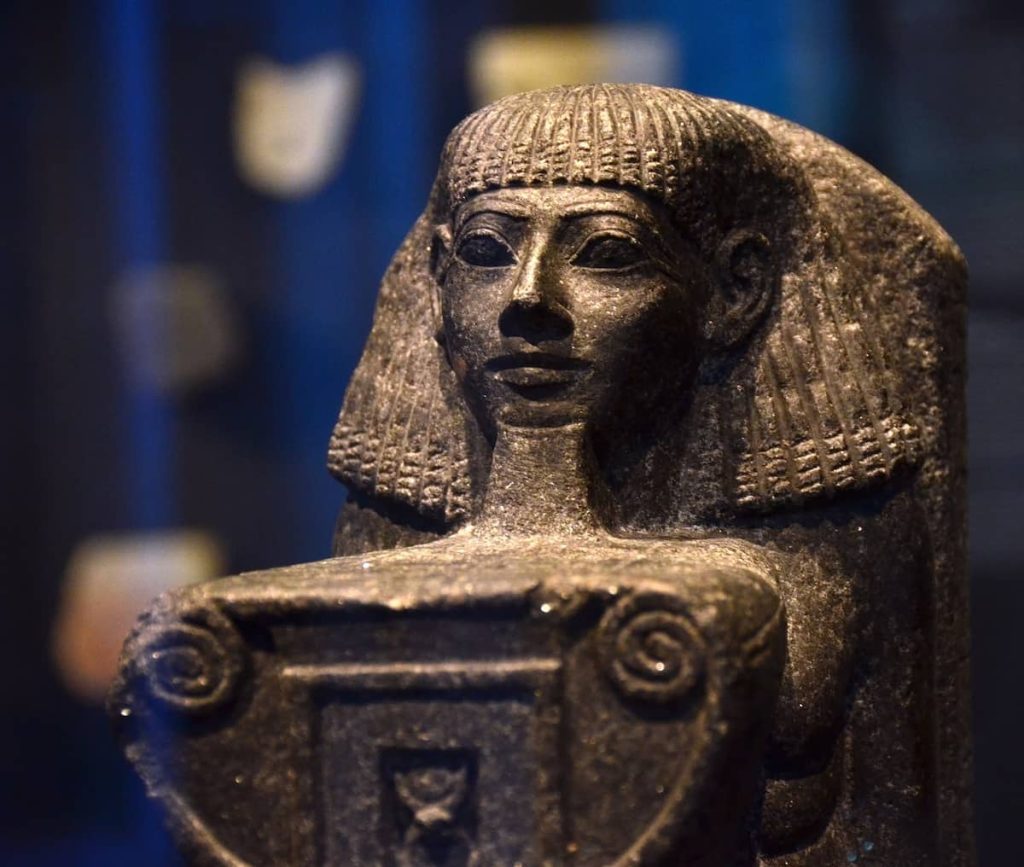
Senenmut
This granite statue shows the 18th-dynasty architect Senenmut. He was a close advisor and secret lover of Queen Hatchepsut. The statue is of Senenmut in beautiful detail, holding Hatshepsut’s daughter Neferure. Senenmut supervised the erection of two twin obelisks at the entrance to the Temple of Karnak.
He also designed the construction of the Mortuary Temple of Hatshepsut. It was the masterpiece of ancient architecture near Luxor. Senenmut became Hatshepsut’s close confidant. And some Egyptologists claim he was also the widowed queen’s secret lover.
7- Hapi the Scribe
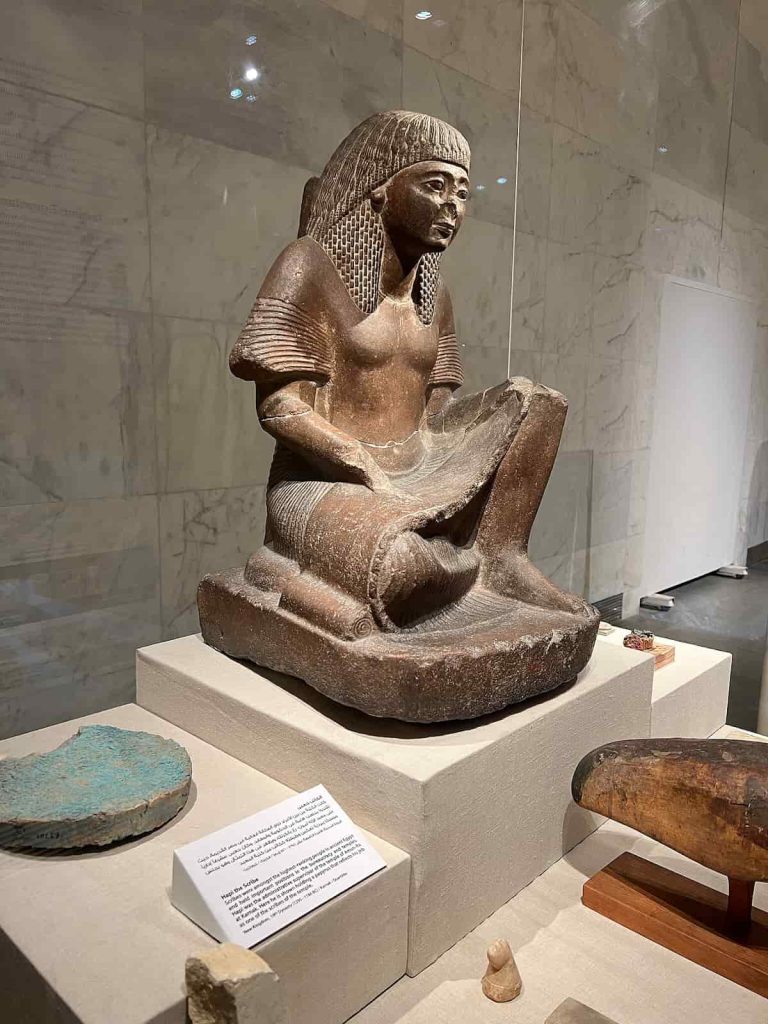
Statue of Hapi the Scribe, 19th dynasty
This New Kingdom sandstone statue shows Hapi the Scribe. He was a supervisor in the temple of Amun-Ra at Karnak. Also, he held the papyrus that was the tool of his trade. Scribes were highly revered in Ancient Egypt. And the Ancient Egyptians considered the invention of writing a divine event in which the God Thoth gave each sound a form. Scribes were mostly administrative but also helped to preserve Egypt’s oral traditions, epic poems, and stories.
8- King Thutmose III
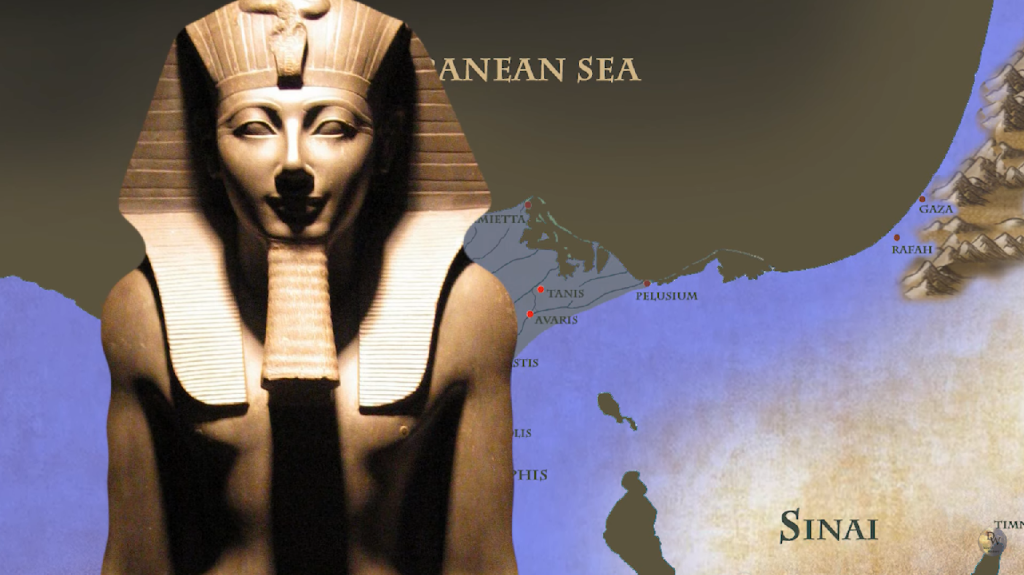
Thutmose III
This splendid black granite statue from the New Kingdom depicts Ancient Egypt’s great warrior king Thutmose III. Widely regarded as a military genius, Thutmose III was Egypt’s expansionist ruler who was sometimes called “the Napoleon of Egypt.”
He conducted some 17 military campaigns that stretched Egypt’s borders to their largest extent. The statue shows an athletic and fit Thutmose III with a smooth and youthful face, and large, high-bridged nose, and a slight smile. You can also view the mummy of Thutmose III in the Mummy Hall downstairs.
9- Akhenaten
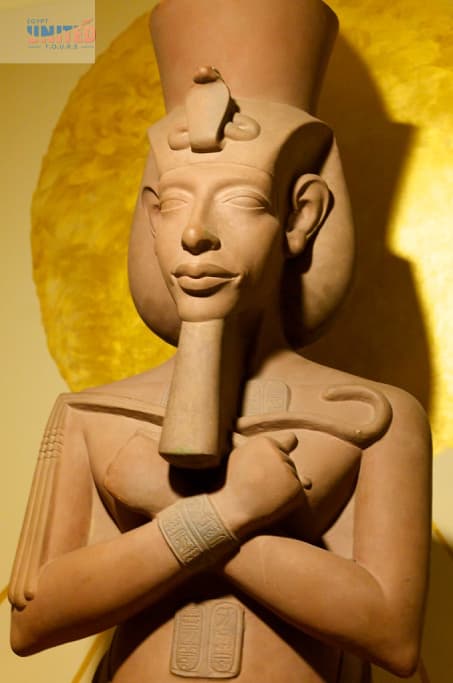
Akhenaten
This splendid New Kingdom sculpture is of a curvy King Akhenaten. The king revolutionized Egyptian art and religion. He was in sandstone with a round belly, broad hips, nearly feminine breasts, and a long, thin face with thick lips that would have been deemed unflattering by earlier kings.
The sculpture is accompanied by an excerpt from a poetic hymn to the sun, which describes the sun as the mover and giver of all life. Akhenaten was also the head of one of Ancient Egypt’s most well-known families. His wife was the beautiful Queen Nefertiti, and his son was King Tut.
10- Duck bracelets of King Ramesses II
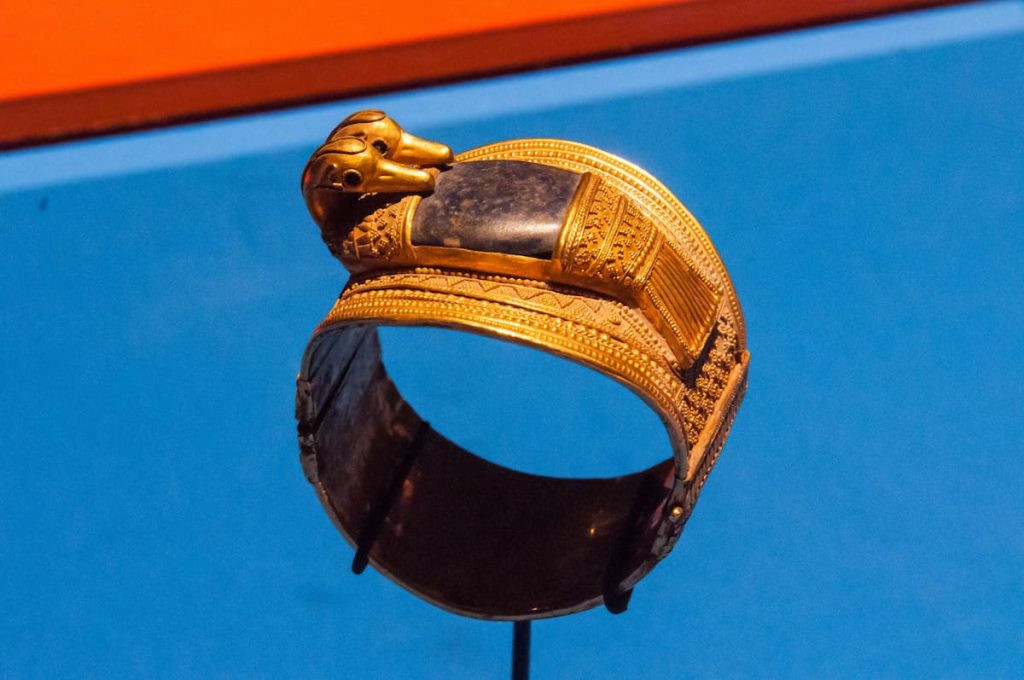
Duck Bracelet of Ramesses II
These incredible gold and lapis lazuli bracelets once adorned the wrists of Ramesses II. They testify to the skills of New Kingdom craftsmen. The solid gold bracelets are studded with intricate geometric motifs and made of two parts linked together by hinges and clasps. Moreover, they’re decorated with a double-headed duck with a spread tail, whose two beaks curve towards the lapis lazuli that makes up the duck’s body. There are many other monuments.
Egypt Standard Tours
Egypt United Tours, you may now pick from a wide choice of Egypt vacation packages that take you to explore the pharaonic heritage, the Giza Pyramids, the Nile River, and the Red Sea, as well as Museum of civilization.
Is it easy to arrive at the museum?
The Museum of Civilization provides easy access to suit all visitors, such as free wheelchairs, designated parking spots, and elevators. Brochures in Braille are available on request; reservations in advance are required for sign-language tours.
The NMEC ticket prices
The ticket prices of the Museum of Civilization for foreigners are 550 EGP (11$), but for Adults are 300 EGP (6$) for Students.
NMEC Hours
The museum opens daily from 9 am to 5 pm.
Conclusion
Overall, this museum expresses the great Egyptian civilization. The NMEC is the first of its kind in Egypt and the Arab world. It presents the richness and diversity of Egyptian civilization throughout the ages, from prehistoric times to the present day. It focuses on its continuity and stability as demonstrated by its tangible and intangible heritage. The museum’s exceptional collection includes the royal mummies, which are exhibited in a new interactive display using 21st-century cutting-edge technology. That is to reveal their secrets, in addition to shedding light on the rituals and religious beliefs of mummification in ancient Egypt.

